April 02, 2011 (Sun Valley, ID) – The women’s sprint went more or less according to form, but the topsy-turvy men’s race produced a start list for Saturday morning’s hill climb that no one would have predicted.
The big upset of the day was Kris Freeman’s (US Ski Team/Waterville Valley) failure to qualify for the heats. Freeman, the mini-tour leader, fell on the final bend before the home stretch, a location where a number of skiers had problems, and was 5.12 seconds too slow to make the top 30 cut, ending up in 46th place. Tad Elliott (CXC), third overall in the mini-tour coming into the sprint, also failed to qualify finishing 42nd, 4.03 seconds out.
![Men's Sprint podium (l-r) Packer, Newell, Sinnot, Flora, Hoffman [P] Nils Ribi](http://skitrax.com/wp-content/uploads/2011/04/MPod5581003058_c2ec0f786f_b.jpg) Andy Newell (USST/Stratton) qualified first, 3.53 seconds ahead of Simi Hamilton (US Ski Team/Sun Valley SEF), Drew Goldsack (Canadian NST/AWCA), ranked second in the Spring Series coming into the qualifying round double-poled his way to the eighth qualifying position, and looked like he might be putting himself in position to leapfrog Freeman.
Andy Newell (USST/Stratton) qualified first, 3.53 seconds ahead of Simi Hamilton (US Ski Team/Sun Valley SEF), Drew Goldsack (Canadian NST/AWCA), ranked second in the Spring Series coming into the qualifying round double-poled his way to the eighth qualifying position, and looked like he might be putting himself in position to leapfrog Freeman.
Stratton Mountain School OJ, Skyler Davis, qualified third, Brent McMurtry (Canadian NST) fourth, Stefan Kuhn (Canadian NST) fifth, Mike Sinnott (SVSEF) sixth, and Swede Simon Persson (Åre Skidgymnasium) in seventh.
The tracks for the qualifying round were rock hard and icy, motivating several skiers to forego wax and double-pole on their skating skis. Making that choice were Sinnott, Goldsack, Persson and Jess Cockney (AWCA) in 15th amongst others. Those who double-poled the qualifying round were not planning to double-pole in the heats, as the sun was out, the temperature was climbing, and the handwriting was on the wall – the course was going to slush up before the heats started.
![Top qualifier Newell at the front...[P] Nils Ribi](http://skitrax.com/wp-content/uploads/2011/04/Newell-5581004094_34e67a892c.jpg) As strange as some of those qualifying results were, things had only begun to get weird. The Canadians, with three of the top eight qualifiers, only advanced Kuhn to the semis – and their wax did not look super. So, Goldsack and McMurtry failed to take advantage of their opportunity. Then Hamilton placed third in his heat but advanced as a lucky loser.
As strange as some of those qualifying results were, things had only begun to get weird. The Canadians, with three of the top eight qualifiers, only advanced Kuhn to the semis – and their wax did not look super. So, Goldsack and McMurtry failed to take advantage of their opportunity. Then Hamilton placed third in his heat but advanced as a lucky loser.
Quarterfinal winners were top-seeded Newell, Noah Hoffman (USST/Aspen – 24th in qualifying), Sinnott in a very fast heat over Kuhn and Swede Oskar Kardin, Tim Reynolds (Craftsbury Green – 22nd in qualifying), and Dartmouth’s Eric Packer (18th in the qualifications). A surprising semifinalist coming out of the first heat was Michigan Tech’s Petter Sjulstad who had placed 30th in the qualifications at 0.06 ahead of 31st-place Brian Gregg (CXC).
Newell and Hoffman went 1-2 in the first semifinal, and Sinnott and APU’s Lars Flora (qualified 12th) did the same in semi number two. Through the first two rounds, these four appeared to be the strongest skiers.
The major casualties of the semifinals were Hamilton, who placed fourth and was relegated to the “B” final, and USSA SRNC classic sprint bronze medalist Skyler Davis. Hamilton and Davis salvaged a little by going 1-2 in the “B” final.
So, Freeman had opened the door, but one by one, Goldsack, McMurtry, and Hamilton had declined to step through. Hoffman was the only skier in the “A” final who had a chance to get with Freeman.
![SVSEF Fans [P] David Wheelock](http://skitrax.com/wp-content/uploads/2011/04/SVSEF-Fans5581122626_2e51e3a2e7.jpg) The final started with Newell out in front, as he had done in each of his previous two heats. Sinnott and Flora, who were duking it out for the SuperTour season-long sprint title, were skiing side-by-side about 10-15 meters back. About 150m before reaching Coaches’ Climb Sinnott bade farewell to Flora and put on a big move, reeling in Newell in short order.
The final started with Newell out in front, as he had done in each of his previous two heats. Sinnott and Flora, who were duking it out for the SuperTour season-long sprint title, were skiing side-by-side about 10-15 meters back. About 150m before reaching Coaches’ Climb Sinnott bade farewell to Flora and put on a big move, reeling in Newell in short order.
Later Newell told SkiTrax, “Mikey came flying past me on the flat there and I tried to hang on, but he skied the hill really well and carried his speed to the finish.”
As the grade steepened on Coaches’ Climb Sinnott put on a monstrous move with a furious tempo reminiscent of Sweden’s Emil Joensson. Newell attempted to follow, but could match neither the stride rate nor the speed of the determined SVSEF skier. As they skated around the left turn at the top and dropped down Waterfall, Sinnott had a solid 10 meters, which he expanded all the way to the finish, eventually winning by 6.7 seconds over Newell.
Not the predicted outcome.
Sinnott replayed his strategy in a post-race interview with SkiTrax. “I’ve trained here for 20 years, and I knew how to ski that hill. It’s a tricky one, but if you come into it right you can keep your momentum. I was looking ahead to Newell the whole time – that’s where the race was.
“I’d gotten boxed out (earlier in the heat), but like I said, my skis were fast, so when I got a clear lane I went for it. I had great skis and I was still pretty fresh going into it. I figured I’d put it all on the line there and see what happened on the downhill.”
![Buds...Sinnot (l) and Flora. [P] Nils Ribi](http://skitrax.com/wp-content/uploads/2011/04/Sin-Flor5581003866_b1f66235bd.jpg) On his battle for the SuperTour season-long sprint title with Flora he commented, “We both knew what was at stake, and we were keeping our eyes on each other. It’s been fun. Lars and I were teammates on the Factory Team a few years ago and I’ve always had a fun time racing with him.”
On his battle for the SuperTour season-long sprint title with Flora he commented, “We both knew what was at stake, and we were keeping our eyes on each other. It’s been fun. Lars and I were teammates on the Factory Team a few years ago and I’ve always had a fun time racing with him.”
Flora’s take: “All day we were watching each other, in the qualifying, in the quarterfinal, and in the semifinals and finals (head-to-head in the last two). It was fun. In the final he was in another league. He just dominated and he deserved to win the $2,000 (for the season long sprint title.)”
Sinnott’s strategy in tomorrow’s hill climb: “Don’t die.”
The winner’s dominance was made evident by taking a close look at the final bracket results: his winning time in the third quarterfinal (3:36.8) was the fastest time in the rounds, his winning time in the “A” final was the second fastest time in the rounds, and his winning time in the semifinal was the sixth-fastest time in the rounds.
After the race Newell added, “I’m pretty tired. I wish I was in the kind of condition where I could defend my mini-tour title from last year (in Maine), but unfortunately that’s not the way it is. The season has had some highlights, like Stockholm. But now I’m here to support US skiing and my club, Stratton.”
How much did the conditions slow down from the qualifying to the heats? Sinnott’s fastest heat time was more than 34 seconds slower than Newell’s qualifier winning time of 3:02.65 – almost 19% slower.
Freeman, despite his morning crash, will start first in the hill climb tomorrow at 9am. Hamilton, who could have been the first starter had he advanced to the “A” final and skied well, starts second at 0:04, followed by Goldsack at 0:11 and Hoffman at 0:16.
Things really get busy then with six skiers starting in 12 seconds: Flora-0:33, Kuhn-0:39, McMurtry-0:40, Sinnott-0:42, Elliott-0:44 and Sandau-0:45. Five skiers start between one and two minutes after Freeman.
The hill climb course starts at the base of Dollar Mountain, then heads across the hill and uses some of the golf course terrain to reach the base of the Elkhorn lift, then starts the major ascent, climbing up Elkhorn Bowl to the summit ridge, the going onto the back side of the hill before finishing up on a cat track at the top of the Elkhorn lift.
The final climb, beginning at the bottom of Elkhorn, ascends about 160m/520 feet; there’s about 90m of climbing between the start and the bottom of the Elkhorn lift.
Because warm temperatures the last few days have affected the solidity of the snow, it is still possible that the course may be changed on Saturday morning, with some of the golf course terrain removed, and a portion of it replaced by a short loop around the base of the Dollar Mountain alpine lifts. The deciding factor will be if the course can support pole baskets.
Women’s Sprint
Compared to the unpredictable nature of the men’s sprint, the women’s race was almost boring. Only two skiers outside the first 12 advanced from the quarterfinals, and the first five finishers in the “A” final had all qualified in the first eight.
![Randall (l) and Crawford share some face time. [P] Nils Ribi](http://skitrax.com/wp-content/uploads/2011/04/Rand-Craw5581132800_ab05ffd077.jpg) As expected, Kikkan Randall (USST/APU), was the top qualifier in 3:28.13, a full 4.13 seconds ahead of Ida Sargent (Craftsbury Green) and 4.87 ahead of Chandra Crawford (Canadian NST/Canmore Nordic). No other women were within 10 seconds of Randall.
As expected, Kikkan Randall (USST/APU), was the top qualifier in 3:28.13, a full 4.13 seconds ahead of Ida Sargent (Craftsbury Green) and 4.87 ahead of Chandra Crawford (Canadian NST/Canmore Nordic). No other women were within 10 seconds of Randall.
In the first of the women’s quarters, top qualifier Randall skied clear and led from the gun, to win by 4.7 seconds over Dartmouth’s Sophie Caldwell.
Maria Graefnings (Utah), who mentioned the other day her recent lack of sprinting due to the college schedule, won the 2nd quarterfinal – the fastest heat of the day – ahead of Holly Brooks (APU), in the fastest time of the elimination round.
![Women's semifinal action... Randall leading. [P] John Estle](http://skitrax.com/wp-content/uploads/2011/04/womens-semifinal-1.2.jpg) Heather Mooney (Stratton) was third in the third-fastest time of the heats, but she did not advance because the Lucky Losers were determined by qualifying times. Fourth-place Morgan Smyth (APU) had the fourth-best time of the heats, and Nicole Deyong (SVSEF), in fifth, had the sixth-best time of the heats.
Heather Mooney (Stratton) was third in the third-fastest time of the heats, but she did not advance because the Lucky Losers were determined by qualifying times. Fourth-place Morgan Smyth (APU) had the fourth-best time of the heats, and Nicole Deyong (SVSEF), in fifth, had the sixth-best time of the heats.
Jessie Diggins (CXC) won the third heat over a surprising Becca Rorabaugh of APU. CXC’s Jennie Bender topped Hannah Dreisigacker (Craftsbury Green) in the fourth heat, with Sargent advancing from third place as a Lucky Loser. APU’s Sadie Bjornsen won the last quarter over 23rd-fastest qualifier Sara MacCarthy (U of Utah). Canada’s Crawford was third but advanced as a Lucky Loser.
![Utah's Sara Maccarthy gets encouragement from fans. [P] David Wheelock](http://skitrax.com/wp-content/uploads/2011/04/Maccarthy-5581125284_2630b9b028.jpg) Both semifinals bifurcated into two groups of three, with no doubt about who was going to the “A” final and who would wind up in the “B” final. Randall, Graefnings and Caldwell came out of the first semi and Bjornsen, Crawford and Diggins from the second.
Both semifinals bifurcated into two groups of three, with no doubt about who was going to the “A” final and who would wind up in the “B” final. Randall, Graefnings and Caldwell came out of the first semi and Bjornsen, Crawford and Diggins from the second.
In the “B” final Sargent topped her Craftsbury Green teammate Dreissigacker, with MacCarthy taking third ahead of Rorabaugh. Brooks and Bender walked it in.
Randall led from the get-go in the “A” final, and pushed the pace up Coaches’ Climb, with only Crawford making a serious attempt to follow. Graefnings came on strong at the finish to overtake Bjornsen, while Diggins, right on their tails heading down Waterfall, lost ground all the way to the finish, ending up fifth.
![Laughs at the finish (l-r) Crawford, Brooks, Randall, Graefnings. [P] Nils Ribi](http://skitrax.com/wp-content/uploads/2011/04/W-Group5580545907_05e6055756_b.jpg) The women’s heat times were considerably slower than their qualifying times. Randall’s best time in the heats, 4:19.1, was almost 25% slower than her qualifying times. Graefnings fared a little better – her best heat time of 4:14.9 was only 15% slower than her qualifying time.
The women’s heat times were considerably slower than their qualifying times. Randall’s best time in the heats, 4:19.1, was almost 25% slower than her qualifying times. Graefnings fared a little better – her best heat time of 4:14.9 was only 15% slower than her qualifying time.
Randall continued to pad her bank account, snagging $200 for the fastest qualifying time in addition to the first-place money. After the race she said, “I really feel like I wanted to empty the tank here [in Sun Valley] and go out and see what I could do.”
Regarding Crawford making a late surge, Randall confided to SkiTrax, “I knew I couldn’t let down going to the line. She’s a great fighter and she’s usually really strong on those finish stretches.”
![Women's podium (l-r) Brooks, Crawford, Randall, Graefnings, Diggins [P] Nils Ribi](http://skitrax.com/wp-content/uploads/2011/04/W-Pod5580544717_420bce8c94_z.jpg) “What a fun day to be out racing,” an enthused Crawford told SkiTrax. “In the final, I really wanted to stick on Kikkan as long as possible. I had a move in mind, to attack, but . . . from 10 meters back, it’s more of an attempt to catch up.
“What a fun day to be out racing,” an enthused Crawford told SkiTrax. “In the final, I really wanted to stick on Kikkan as long as possible. I had a move in mind, to attack, but . . . from 10 meters back, it’s more of an attempt to catch up.
“She had an amazing tempo running up the hill [Coaches’ Climb]. She poured it on like an Emil Joensson tempo, and you know what that looks like. It’s a real advantage for North American skiing for us to have someone so strong on the international circuit for us to mark ourselves against.”
Looking toward the Hill Climb, she noted: “I’m weak on climbing and really bad in slush, so it’s a perfect day to get out there. It’s exactly what I want to do more of.”
![Top US Ski Team sprinters Kikkan Randall and Andy Newell. [P] Nils Ribi](http://skitrax.com/wp-content/uploads/2011/04/Rand-Newl5581131252_76732a7185.jpg) At 9:30am tomorrow, Randall will take off with an advantage of 1:23 over Jessie Diggins, and 1:29 over Holly Brooks. Graefnings is at 2:19, then Sadie Bjornsen and Chandra Crawford start together at 3:16.
At 9:30am tomorrow, Randall will take off with an advantage of 1:23 over Jessie Diggins, and 1:29 over Holly Brooks. Graefnings is at 2:19, then Sadie Bjornsen and Chandra Crawford start together at 3:16.
When asked about her big lead starting out tomorrow’s pursuit start hill climb, Randall said “It’s a big hill – anything can happen. It’s a great way to finish off the season.”
Sprint Results HERE.
Sprint Results w/brackets HERE.
SuperTour Standings after Sprints HERE.
SuperTour photos HERE (pls check back as more photos are uploaded)





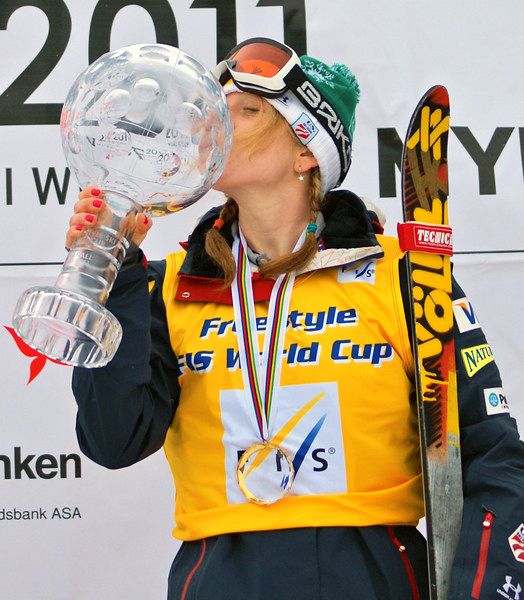
![XC skier Kikkan Randall was recognized with both the USSA XC Skier of the Year Award as well as the Buddy Werner Award for her leadership and sportsmanship. USSA Chairman Dexter Paine presents the award. [P] Sarah Ely](http://skitrax.com/wp-content/uploads/2011/05/Randall-IMG9033-L.2.jpg)
![Olympic champion Billy Demong congratulates Lake Placid's Joe Lamb who received the USSA's Julius Blegen Award. [P] USSA](http://skitrax.com/wp-content/uploads/2011/05/Joe-Lamb-IMG9178-L.2.jpg)
![APU Nordic's Erik Flora was recognized as the USSA's 2011 XC International Coach of the Year, as well as the USSA XC Club of the Year. USSA Chairman Dexter Paine presents the award. [P] Sarah Ely](http://skitrax.com/wp-content/uploads/2011/05/Flora-IMG8967-M.2.jpg)
![Stefan Kuhn [P] Pam Doyle](http://skitrax.com/wp-content/uploads/2011/05/StefanKuhn-PDoyle.21-267x375.jpg)
![The giant stone fireplace in Telemark's lobby. [P] Jessie Diggins](http://skitrax.com/wp-content/uploads/2011/05/Fireplace.2.jpg)
![The swimming pool is pretty huge. [P] Jessie Diggins](http://skitrax.com/wp-content/uploads/2011/05/SwimmingPool.2.jpg)
![Some of the construction dudes tearing out walls to make way for a massive STRENGTH ROOM. [P] Jessie Diggins](http://skitrax.com/wp-content/uploads/2011/05/Construction.2.jpg)
![The wall of Birkie champions - 1973 to present! Hopefully this stays up. [P] Jessie Diggins](http://skitrax.com/wp-content/uploads/2011/05/BirkieChamps.2.jpg)
![Haley Johnson (USA) in the women's 7.5km WCup sprint in Presque Isle, Maine. [P] Herb Swanson](http://skitrax.com/wp-content/uploads/2011/05/Haley-Johnson_37.2.jpg)
![Johnson had a season of personal bests in 2010-2011. [P] Herb Swanson](http://skitrax.com/wp-content/uploads/2011/05/Johnson-HS_010.2.jpg)
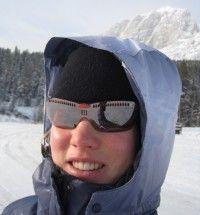
![Martin Koukal (CZE) [P] Heinz Ruckemann file photo](http://skitrax.com/wp-content/uploads/2011/05/Martin-Koukal-WHP2009042606.2.jpg)
![Marcus Hellner (SWE) [P] Nordic Focus](http://skitrax.com/wp-content/uploads/2011/05/Hellner-0000072733.2.jpg)
![Bjorn Lind [P] courtesy of Team Exspirit](http://skitrax.com/wp-content/uploads/2011/05/bjornlind.2.jpg)
![Strength training is an important part of your overall regime. [P] Torin Koos](http://skitrax.com/wp-content/uploads/2011/05/Press-3-200x150.jpg)
![Dead lift into clean. [P] Torin Koos](http://skitrax.com/wp-content/uploads/2011/05/Lift.jpg)
![Squat [P] Torin Koos](http://skitrax.com/wp-content/uploads/2011/05/Squat.jpg)
![Pull Down [P] Torin Koos](http://skitrax.com/wp-content/uploads/2011/05/Pull.jpg)
![Press [P] Torin Koos](http://skitrax.com/wp-content/uploads/2011/05/Press.jpg)
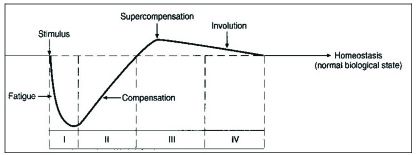
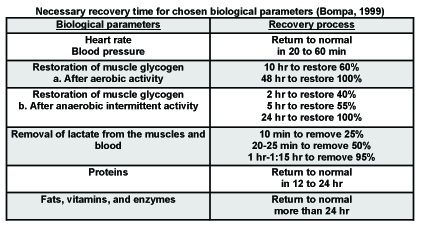


![Chandra Crawford on vacation in St. Lucia. [P] Chandra Crawford](http://skitrax.com/wp-content/uploads/2011/05/stlucia3.jpg)
![Chandra Crawford hiking in St. Lucia. [P] Chandra Crawford](http://skitrax.com/wp-content/uploads/2011/05/stlucia8.jpg)
![(l-r): Devon Kershaw (CAN) and Alex Harvey (CAN) win the Oslo 2011 team sprint. [P] Nordic Focus](http://skitrax.com/wp-content/uploads/2011/05/kershaw.jpg)
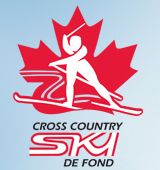
![Canmore Nordic on May 1, 2011 [P] Canmore Nordic Centre Provincial Park](http://skitrax.com/wp-content/uploads/2011/05/May-1-Canmore.2.jpg)
![Drew Goldsack leads Stefan Kuhn up the "wall" climb during the Open Men's 10km at the 2011 XC Nationals in Canmore. [P] Pam Doyle](http://skitrax.com/wp-content/uploads/2011/05/Goldsack-Kuhn-PDoyle.2.jpg)
![In case you can't tell from the photo, Brian McKeever is on a buried picnic table at the top on the Mine Scar - lots of snow left! [P] Drew Goldsack](http://skitrax.com/wp-content/uploads/2011/05/McKeever-IMG_1971-2.2.jpg)
![Brian McKeever enjoying some atypical spring skiing in Canmore. [P] Drew Goldsack](http://skitrax.com/wp-content/uploads/2011/05/McKeever-IMG_1969ac.2.jpg)
![The Canmore Nordic Centre after a 40cm dump of snow. [P] Drew Goldsack](http://skitrax.com/wp-content/uploads/2011/05/Canmore-IMG_1967.2.jpg)
![Johaug (l) and Gaillard - all smiles [P] courtesy of Skarverennet](http://skitrax.com/wp-content/uploads/2011/04/Johaug-Gaillard-2-4914489_1585461.jpg)
![Eugeni Dementiev of Russia...[P] Heinz Ruckemann file photo](http://skitrax.com/wp-content/uploads/2011/04/Dementiev2-2-200x206.jpg)
![Marit Bjoergen (NOR) - the Queen of Nordi. [P] Nordic Focus](http://skitrax.com/wp-content/uploads/2011/04/Bjoergen200311mf584.3.jpg)
![Tarjei Boe (NOR) won big in 2011. [P] Nordic Focus](http://skitrax.com/wp-content/uploads/2011/04/Boe080311cm005.2.jpg)
![Kikkan Randall (USA) at the top of Hawaii's Haleakala. [P] Kikkan Randall](http://skitrax.com/wp-content/uploads/2011/04/randallhawaii.jpg)
![Countown to the Innsbruck 2012 Winter Youth Olympic Games. [P] IYOGOC](http://skitrax.com/wp-content/uploads/2011/04/iyogoc.jpg)
![The Olympic Museum's Hope Exhibition. [P] olympic.org](http://skitrax.com/wp-content/uploads/2011/04/hope-200x203.jpg)
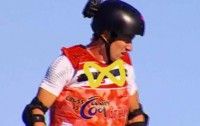
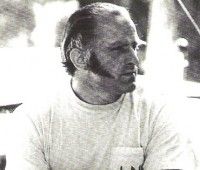
![[P] XC Oregon](http://skitrax.com/wp-content/uploads/2011/04/BrknTop_Screamer-200x266.jpg)
![Kikkan Randall and Andy Newell at the US 30/50km Championships. [P] David Wheelock](http://skitrax.com/wp-content/uploads/2011/04/Rand-Newl5581131252_76732a7185.2.jpg)
![Justyna Kowalczyk (POL) [P] Nordic Focus file photo](http://skitrax.com/wp-content/uploads/2011/04/Kowalczyk010111ah006.2-200x255.jpg)
![Fast and Female Northern Youth Empowerment Weekend [P] Fast and Female](http://skitrax.com/wp-content/uploads/2011/04/faf1.jpg)
![Fun times on the Community Ski Day [P] Fast and Female](http://skitrax.com/wp-content/uploads/2011/04/faf3.jpg)
![Having fun with Fast and Female [P] Fast and Female](http://skitrax.com/wp-content/uploads/2011/04/faf2.jpg)
![Participants show off their new Fast and Female buffs! [P] Fast and Female](http://skitrax.com/wp-content/uploads/2011/04/faf4.jpg)
![Devon Kershaw (CAN) wins his first ever World Cup. [P] Nordic Focus](http://skitrax.com/wp-content/uploads/2011/04/Kershaw050111ah003.2-200x180.jpg)
![All smiles at the Canmore Nordic Polar Cup. [P] CCC](http://skitrax.com/wp-content/uploads/2011/04/nordicpolarcup1.jpg)
![Face painting and skiing - fun at the Canmore Nordic Polar Cup. [P] CCC](http://skitrax.com/wp-content/uploads/2011/04/nordicpolarcup3.jpg)
![Fun on skis at the Canmore Nordic Polar Cup. [P] CCC](http://skitrax.com/wp-content/uploads/2011/04/nordicpolarcup2.jpg)
![Easter cheer at Mont-Sainte Anne [P] Monte-Sainte Anne](http://skitrax.com/wp-content/uploads/2011/04/canard2-200x258.jpg)
![Alex Harvey [P] Monte-Sainte Anne](http://skitrax.com/wp-content/uploads/2011/04/alex_harvey-200x293.jpg)
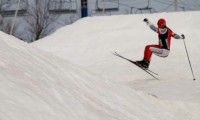
![Canadian Team skier Ivan Babikov [P] Nordic Focus](http://skitrax.com/wp-content/uploads/2011/04/Babikov100110ah087.2.jpg)
![Andrus Veerpalu (EST) [P] Nordic Focus](http://skitrax.com/wp-content/uploads/2011/04/Veerpalu-200x287.jpg)
![Matti Heikkinen (FIN) [P] Nordic Focus](http://skitrax.com/wp-content/uploads/2011/04/heikkinen.jpg)
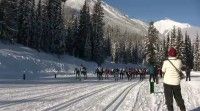

![Kikkan Randall wins the Drammen sprint. [P] Nordic Focus](http://skitrax.com/wp-content/uploads/2011/04/Randall200211ah001.2-200x187.jpg)
![(l) Morgan Arritola (SVSEF) and Kikkan Randall (APU) lead the charge. [P] courtesy of Kikkan Randall](http://skitrax.com/wp-content/uploads/2011/04/Arritola-Randall.jpg)
![One down, four to go! [P] courtesy of Kikkan Randall](http://skitrax.com/wp-content/uploads/2011/04/Sun-Valley-Cheer.jpg)
![The 10km Classic Podium - three down, two to go. [P] courtesy of Kikkan Randall](http://skitrax.com/wp-content/uploads/2011/04/10km-Classic-Pod.jpg)
![The start of the sprint final... [P] courtesy of Kikkan Randall](http://skitrax.com/wp-content/uploads/2011/04/Sprint-Final.jpg)
![Carnage at the Hill Climb finish. [P] Holly Brooks](http://skitrax.com/wp-content/uploads/2011/04/Hill-Climb-Finish.jpg)
![Fun at the Fast Female X-Country SkiFest. [P] courtesy of Kikkan Randall](http://skitrax.com/wp-content/uploads/2011/04/Fast-Female.jpg)
![Canada’s Brian McKeever [P] Gibson Pictures](http://skitrax.com/wp-content/uploads/2011/04/McKeever-Medals-SG7R2668.2.jpg)
![Men's Sprint podium (l-r) Packer, Newell, Sinnot, Flora, Hoffman [P] Nils Ribi](http://skitrax.com/wp-content/uploads/2011/04/MPod5581003058_c2ec0f786f_b.jpg)
![Top qualifier Newell at the front...[P] Nils Ribi](http://skitrax.com/wp-content/uploads/2011/04/Newell-5581004094_34e67a892c.jpg)
![SVSEF Fans [P] David Wheelock](http://skitrax.com/wp-content/uploads/2011/04/SVSEF-Fans5581122626_2e51e3a2e7.jpg)
![Buds...Sinnot (l) and Flora. [P] Nils Ribi](http://skitrax.com/wp-content/uploads/2011/04/Sin-Flor5581003866_b1f66235bd.jpg)
![Randall (l) and Crawford share some face time. [P] Nils Ribi](http://skitrax.com/wp-content/uploads/2011/04/Rand-Craw5581132800_ab05ffd077.jpg)
![Women's semifinal action... Randall leading. [P] John Estle](http://skitrax.com/wp-content/uploads/2011/04/womens-semifinal-1.2.jpg)
![Utah's Sara Maccarthy gets encouragement from fans. [P] David Wheelock](http://skitrax.com/wp-content/uploads/2011/04/Maccarthy-5581125284_2630b9b028.jpg)
![Laughs at the finish (l-r) Crawford, Brooks, Randall, Graefnings. [P] Nils Ribi](http://skitrax.com/wp-content/uploads/2011/04/W-Group5580545907_05e6055756_b.jpg)
![Women's podium (l-r) Brooks, Crawford, Randall, Graefnings, Diggins [P] Nils Ribi](http://skitrax.com/wp-content/uploads/2011/04/W-Pod5580544717_420bce8c94_z.jpg)
![Top US Ski Team sprinters Kikkan Randall and Andy Newell. [P] Nils Ribi](http://skitrax.com/wp-content/uploads/2011/04/Rand-Newl5581131252_76732a7185.jpg)
![World Championships GOLD - unbelievable. [P] courtesy of Devon Kershaw](http://skitrax.com/wp-content/uploads/2011/04/zzzwin.jpg)
![You can almost see it in my face... Too tired, too flat, too slow. Disappointing [P] Nordic Focus](http://skitrax.com/wp-content/uploads/2011/04/devsprintoslo.jpg)
![Leading the pursuit. Too early. 9th place it was.. [P] Nordic Focus](http://skitrax.com/wp-content/uploads/2011/04/osloskate.jpg)
![Yezziree. World Champs baby. [P] courtesy of Devon Kershaw](http://skitrax.com/wp-content/uploads/2011/04/win1.jpg)
![Shredding a bit on the air guitars after the W. [P] Nordic Focus](http://skitrax.com/wp-content/uploads/2011/04/winn.jpg)
![Pretty stoked - World Champion bibs are decent. [P] courtesy of Devon Kershaw](http://skitrax.com/wp-content/uploads/2011/04/winnn.jpg)
![Best racing experience of my life. I know the guy beside me will collect a few more of these puppies in the future. [P] courtesy of Devon Kershaw](http://skitrax.com/wp-content/uploads/2011/04/winnnn.jpg)
![Norwegians are kind of into xc skiing. [P] courtesy of Devon Kershaw](http://skitrax.com/wp-content/uploads/2011/04/Zfans.jpg)
![Ok, so are the Swedish... [P] courtesy of Devon Kershaw](http://skitrax.com/wp-content/uploads/2011/04/zfan.jpg)
![Willing the skis upwards... Lahti didn't go my way. [P] Nordic Focus](http://skitrax.com/wp-content/uploads/2011/04/zlahti.jpg)
![Hummm... who's the guy striding while everyone else is double poling? (Cough) that'd be me... [P] Nordic Focus](http://skitrax.com/wp-content/uploads/2011/04/zstockholm.jpg)
![Not the best day at the office. Tired and blown up in Falun. [P] Nordic Focus](http://skitrax.com/wp-content/uploads/2011/04/ztiredas.jpg)
![handra Crawford just finishing off an Olympic/ACDC air guitar (I wish I had a better picture - it was brilliant!) [P] courtesy of Devon Kershaw](http://skitrax.com/wp-content/uploads/2011/04/zchandracrawford.jpg)
![Setting up for a podium air guitar sesh. Notice the over-bite. That's right, I'm about to unleash the best face-melting imaginary solo on the old Fischers... [P] Nordic Focus](http://skitrax.com/wp-content/uploads/2011/04/ztoblachguitar.jpg)
![Jack Sasseville [P] Pam Doyle](http://skitrax.com/wp-content/uploads/2011/04/Jack-Sasseville.3-200x218.jpg)
![Freeman-Flora-Hoffman [P] David Wheelock](http://skitrax.com/wp-content/uploads/2011/03/Freeman-Flora_MG_0059.21.jpg)
![Brooks leading Diggins - a tight battle for second. [P] David Wheelock](http://skitrax.com/wp-content/uploads/2011/03/Brooks-Diggins_MG_0303.3.jpg)
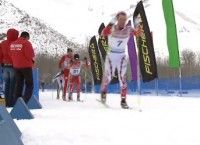
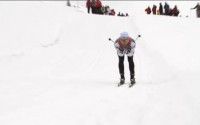
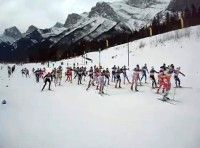
![Kershaw (l) and Harvey after winning Team Sprint gold at Oslo Nordic Worlds. [P] Nordic Focus](http://skitrax.com/wp-content/uploads/2011/03/Kershaw-Harvey-020311ah077.21-200x185.jpg)